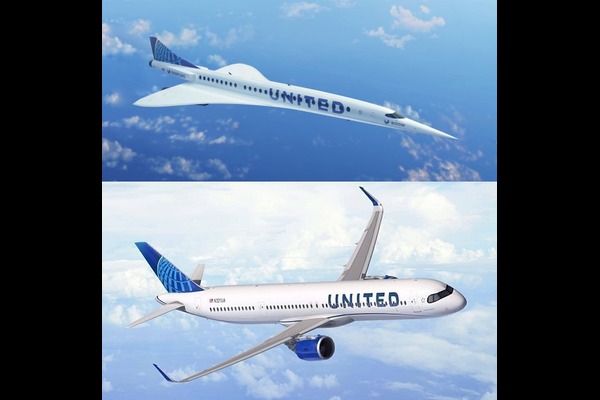In our article published on January 13, 2019, we talked about the ongoing projects on supersonic civil passenger transportation, which was interrupted after the cease of Concorde flights on 2003. You can reach our article here.
Boom Supersonic, one of the projects we mentioned in our article, announced at the beginning of this month that United Airlines will purchase 15 of their ‘Overture’ airliners, once it meets United’s demanding safety, operating and sustainability requirements, with an option for 35 more aircraft.
United has also placed an order of 50 x Airbus A321XLR jetliner in December 2019. Delivery of the aircraft will start in 2024. The order is part of United’s replacement of its Boeing 757-200 fleet of 40 planes, intended to be used an expansion of its transatlantic routes from New York and Washington DC.
A321XLR has a range of 4,700 nm (5,400 mi / 8,700 km) which is the longest of any single-aisle aircraft ever. It will provide United to open up new route possibilities. The plane can seat between 175 to 244 passengers, depending on the configuration.
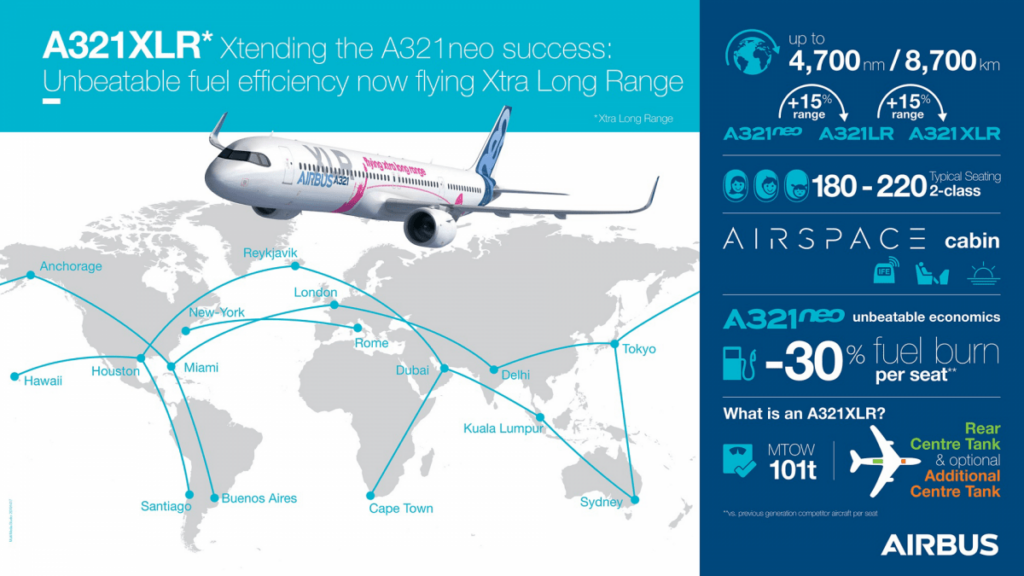
Boom Overture has a very close range capacity, reaching 4,250 nm (4,888 mi / 7,866 km) which plans to begin flights in 2029. This is 5 years after the Airbus A321XLR’s scheduled flights began in 2024. 5 years is quite enough time for passengers to get used to the routes that United Airlines will provide with A321XLR. Especially in the post-Covid recovery period, this model seems to be very helpful to the airline.
On the other hand, as a cabin design, the A321XLR is a model that can be made completely in business class. There are even models designed with an infrastructure for this purpose. Again, in one of our articles specially prepared for this plane, we talked about La Compagnie Boutique Airline, which plans flights with the concept of “Business Class Only”. So there are plans to fly the A321XLR with a full Business Class cabin.
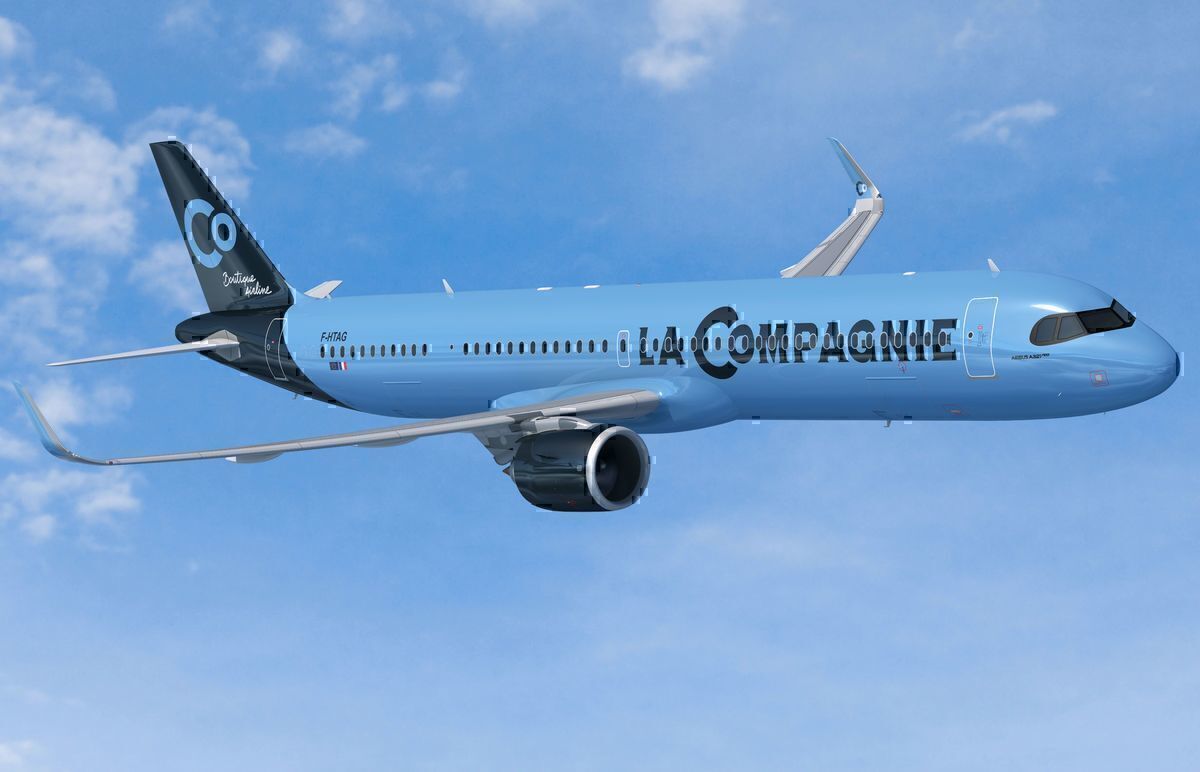

Boom Overture will likewise feature an all-Business Class cabin. His biggest claim is that the ticket prices (unlike its ancestor Concorde) will be the same as a regular business class ticket. In other words, it aims to capture a market with the promise of flying Business Class passengers of other airlines twice as fast for the same price.

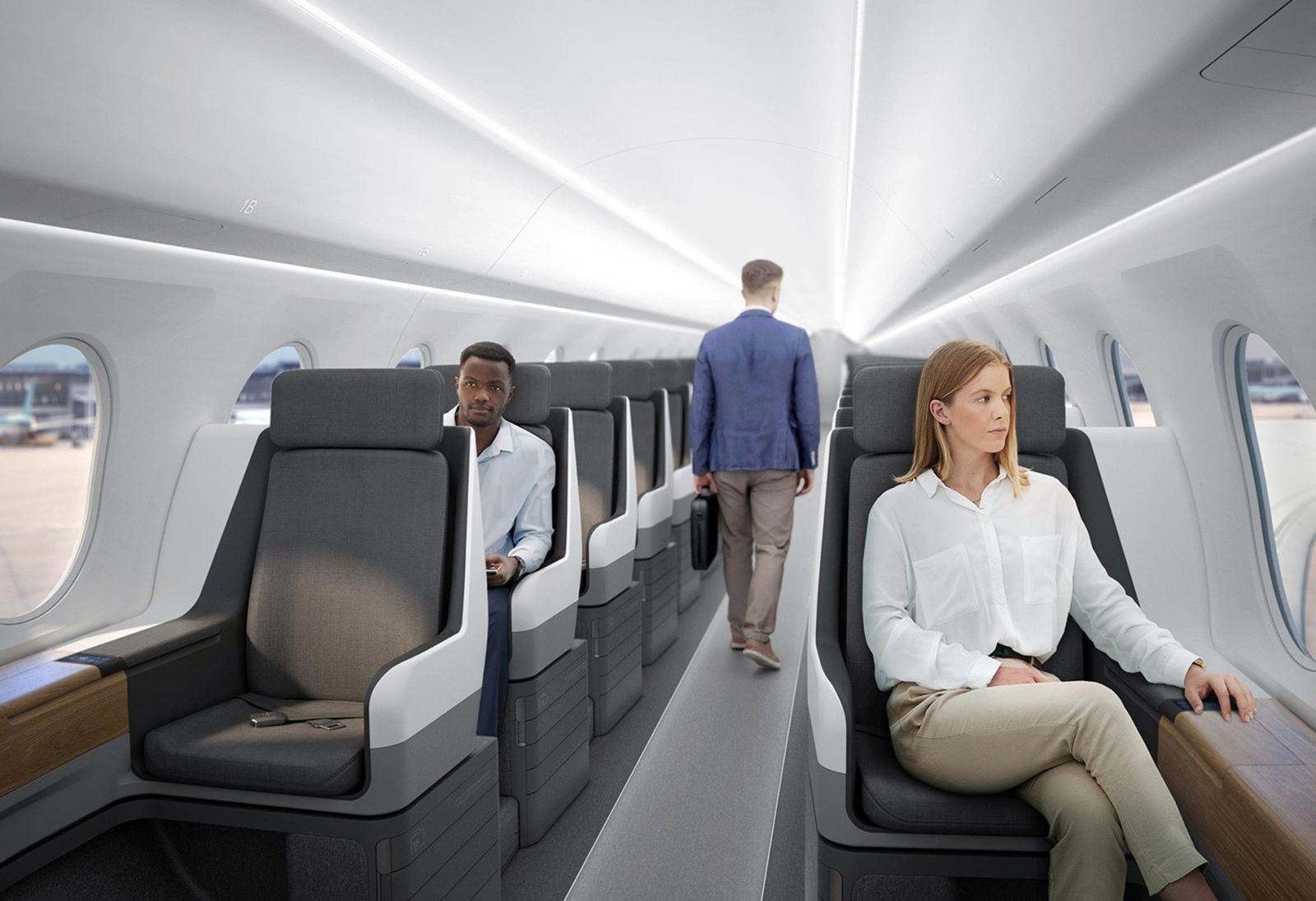
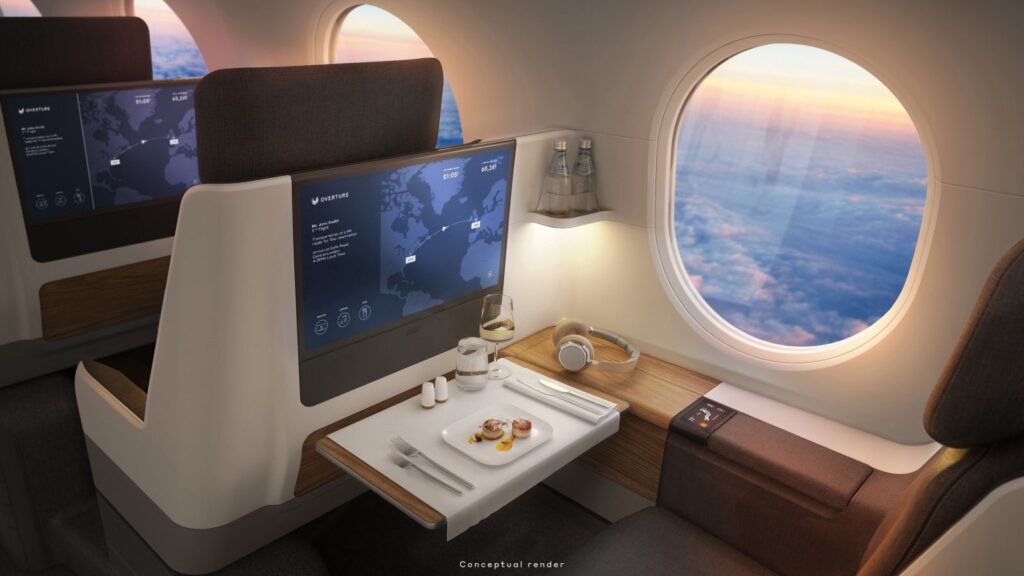
Although Boom Overture and Airbus A321XLR were not built to compete with each other, they are quite close to each other considering their range and cabin concepts.
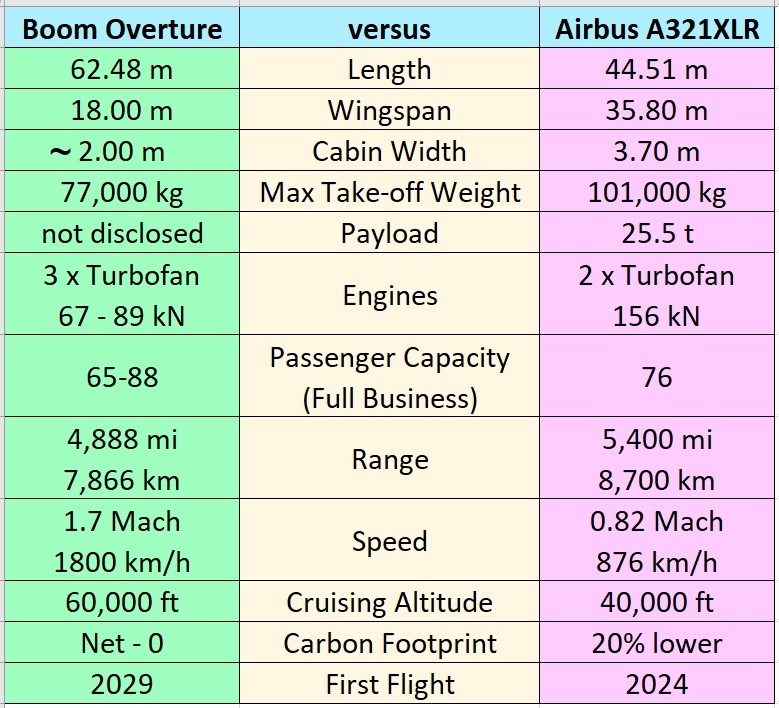
The biggest difference between the two planes will be their speeds, and accordingly the valid flight times for the same routes.

Overture is planned to carry passengers in 2029 with the net-zero carbon print by flying on 100% sustainable aviation fuel (SAF). Considering that this competition will start to show itself in 2030, another factor will be carbon footprints.
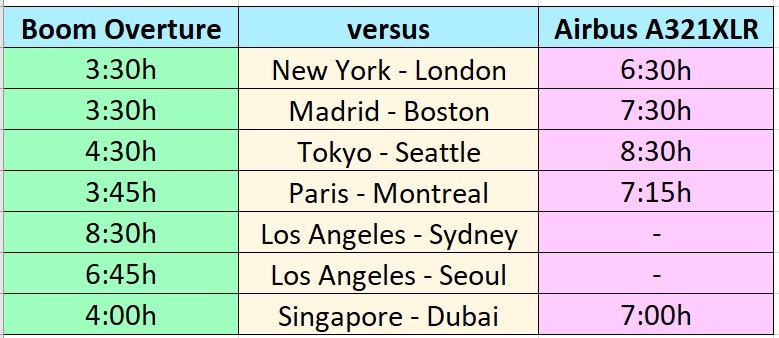
Boom Overture is structured on the basis of a net 0 carbon footprint from the design stage. An aircraft exempt from additional taxation pressure based on carbon footprints, which is planned to come into force soon in civil aviation (and in many other areas).
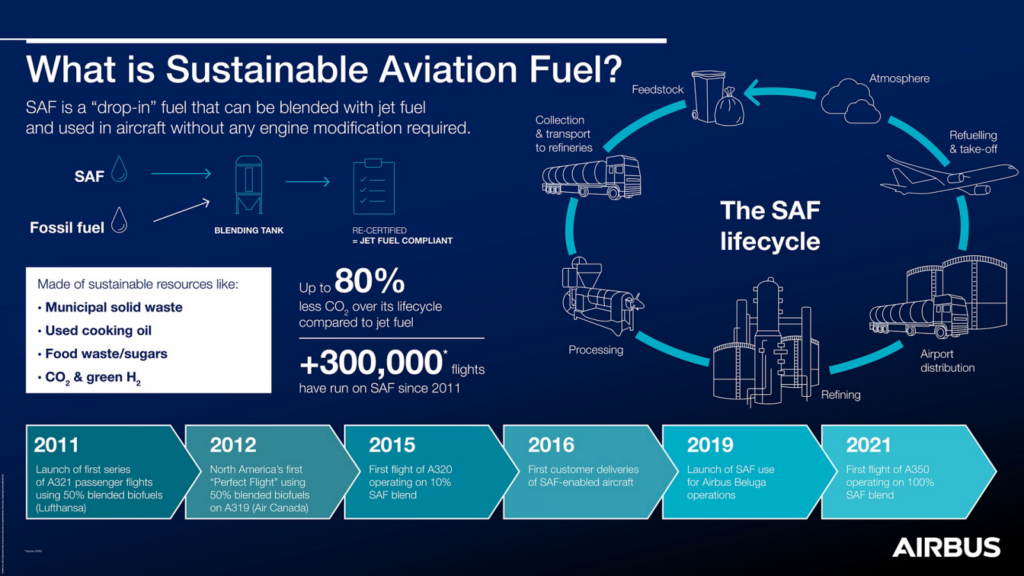
Today, all Airbus aircraft are certified to fly with up to a 50% blend of SAF mixed with kerosene. But the emissions performance of SAF when unblended with any type of fossil fuel has remained a question mark across the industry—until now. Although Airbus has ongoing efforts to reduce its carbon footprint with alternate solutions such as hydrogen and biofuel, there is no timetable set for the A321XLR. Therefore, it is highly likely that it will be exposed to additional taxes that will be reflected in ticket prices in the future. In this respect, it is a little behind the competition.
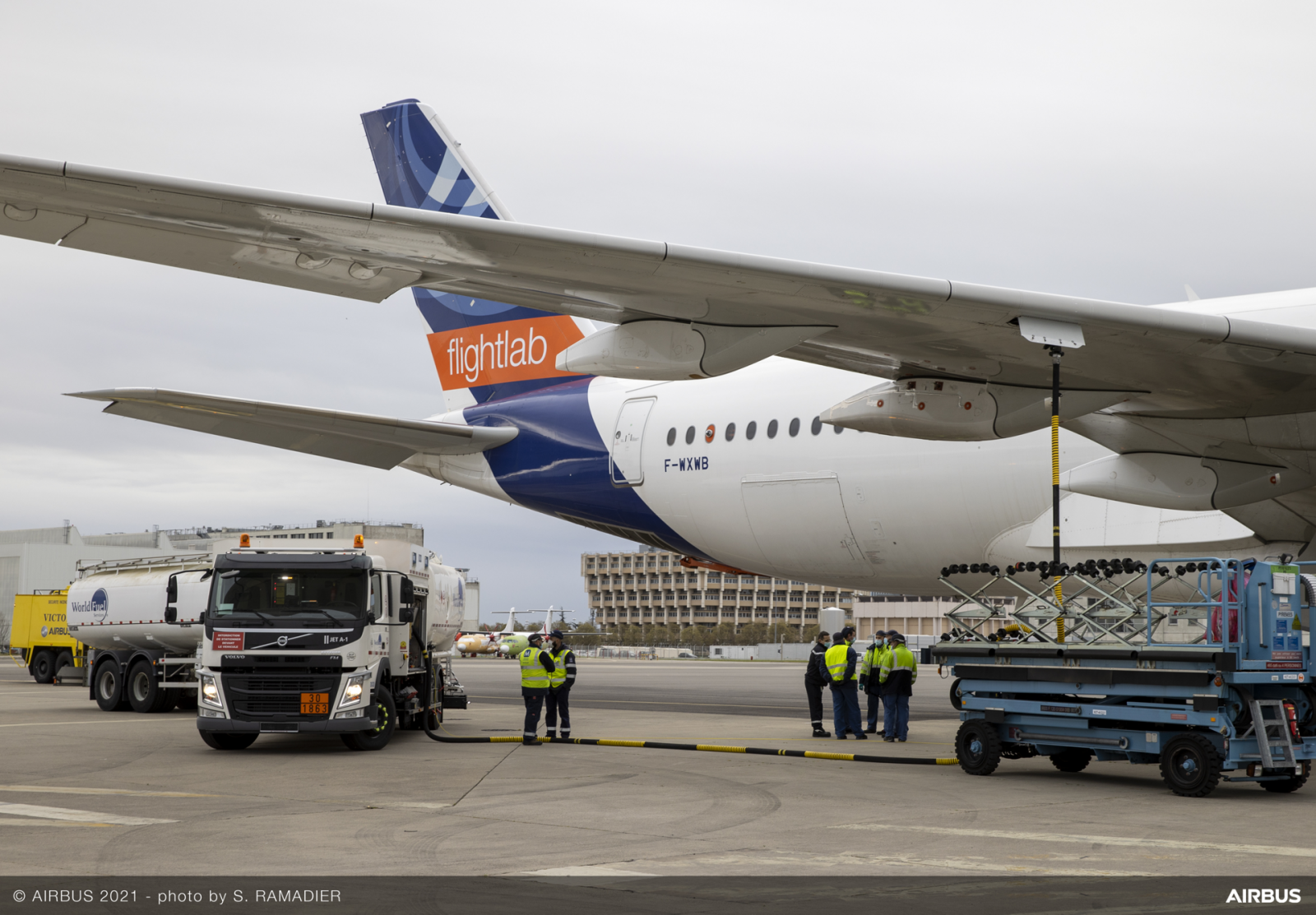
The customers of both models will consist of people who are sensitive to the environment and have the ability to choose between these two alternatives. In an environment where ticket prices are the same, supersonic speed (and prestige) is likely to be preferred. On the other hand, considering their position in society and companies, it is possible to say that an alternative with a 0 carbon footprint will be another strong reason to influence their decisions.
Since both concepts are in the form of boutique operation, it is not possible to replace them with any other aircraft in case of any failure. One of the biggest factors that increased the costs of Concorde operations was the availability of a standby Concorde aircraft. For this risk, a similar measure will always have to be taken so that another aircraft of the same type replaces the disrupted operation.
Although we have focused on these two new model aircraft in our article, it is another fact that many aircraft that continue to fly today will no longer be in operation after 2030. The market will then be dominated by new generation models rather than the dominance of classic aircraft of today.
As a result, we now know that new competitive conditions and environments will exist in the next decade. We are confident that United Airlines has done the necessary feasibility and route studies for both planes, but although they are not built to compete with each other, these two planes seem to push each other’s markets.
https://hub.united.com/2021-06-03-united-adding-supersonic-speeds-with-new-agreement-to-buy-aircraft-from-boom-supersonic-2653216403.html
https://www.nytimes.com/2021/06/03/business/economy/united-airlines-supersonic-planes.html
https://www.airbus.com/aircraft/passenger-aircraft/a320-family/a321neo.html
https://www.airbus.com/newsroom/press-releases/en/2019/06/la-compagnies-first-a321neo-makes-inaugural-transatlantic-flight.html
https://www.airbus.com/newsroom/stories/A350-fuelled-by-100-percent-SAF-just-took-off.html
https://boomsupersonic.com/united
https://www.lacompagnie.com/
